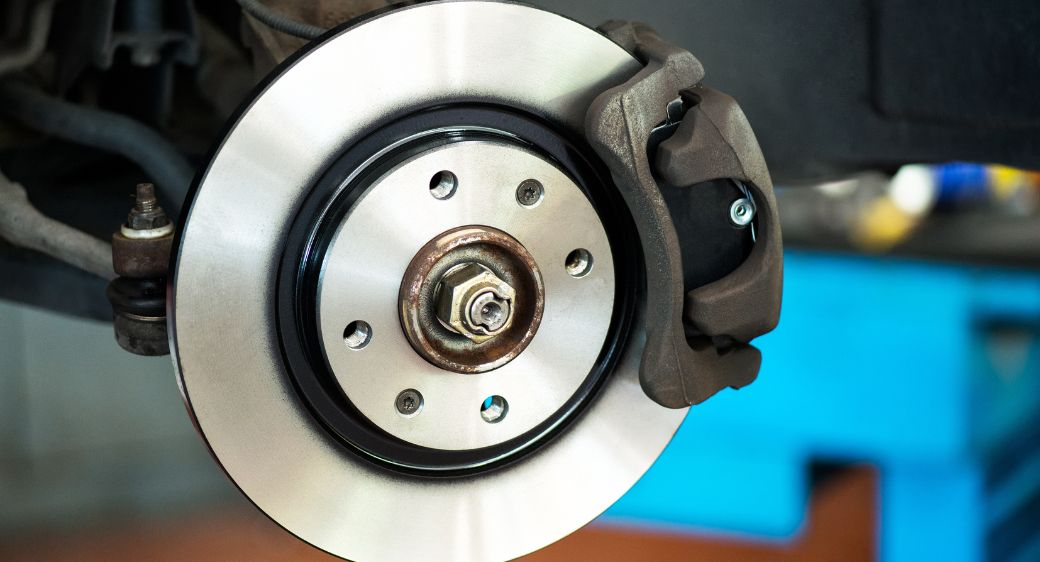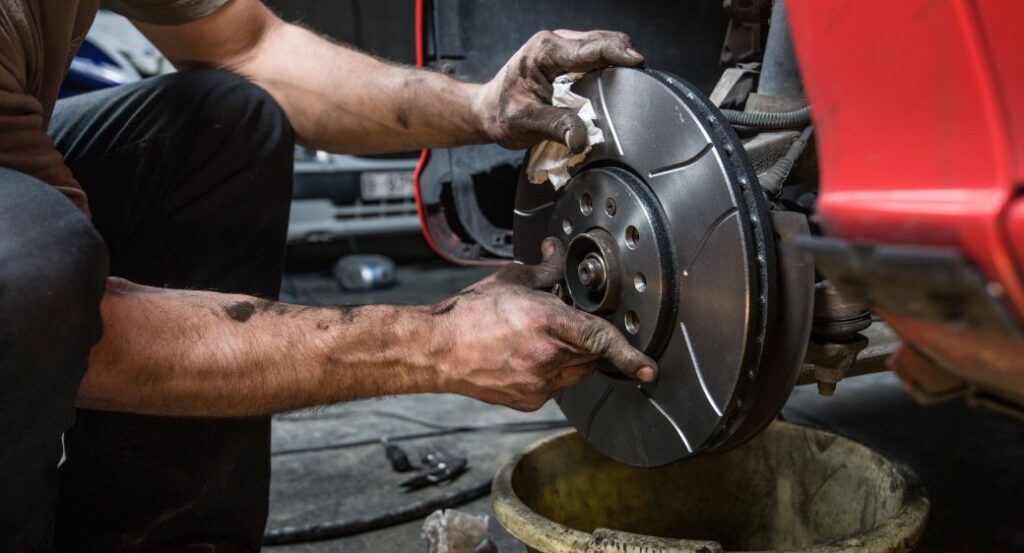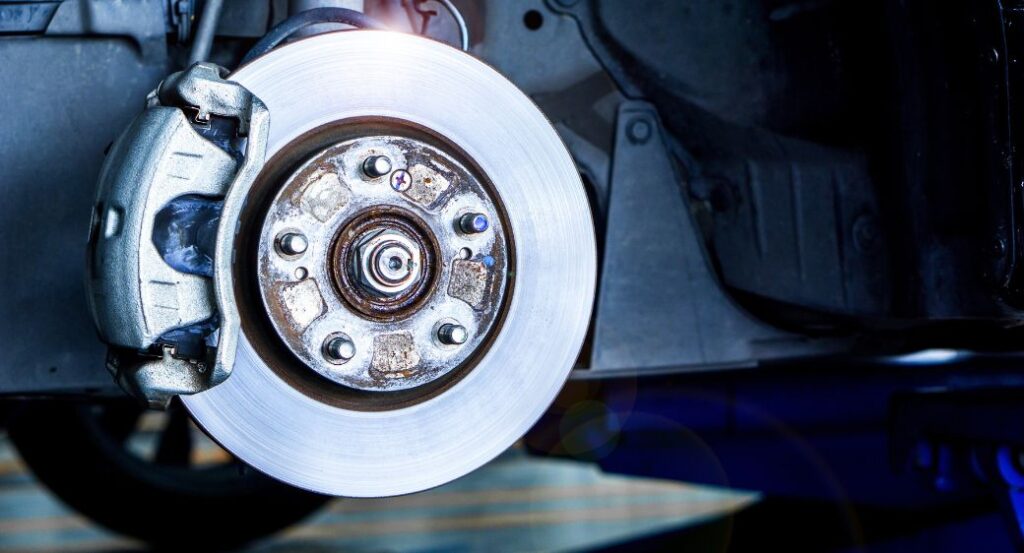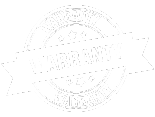The 13 Different Types of Brakes & Their Repair Needs

Sharing this:
Brakes are some of the most critical safety components of any vehicle. Understanding the different types of brakes and their specific repair requirements can help you ensure your vehicle remains safe and reliable. Read on to learn about the different types of brakes and their unique repair needs.
Disc Brakes
Disc brakes are commonly used in modern vehicles due to their efficiency and reliability. They consist of a brake disc, caliper, and brake pads. When the brake pedal is pressed, the caliper squeezes the pads against the disc, creating friction that slows the vehicle. Disc brakes require regular inspection and replacement of pads and discs as they wear down over time. It’s essential to watch for signs of wear, such as squeaking noises or reduced braking performance, and take prompt action to ensure the brakes remain reliable.
Drum Brakes
Drum brakes are typically found on the rear wheels of some vehicles. They consist of a brake drum, wheel cylinder, and brake shoes. When the brake pedal is pressed, the wheel cylinder pushes the shoes against the drum, creating friction to slow the vehicle. Drum brakes require regular maintenance, including adjusting the brake shoes and replacing worn components. Common issues include brake fade and overheating, which can reduce braking efficiency.
Anti-Lock Braking System
The anti-lock braking system (ABS) is a safety feature that prevents wheel lockup during hard braking, allowing the driver to maintain steering control. It uses sensors to monitor wheel speed and a control module to modulate brake pressure. ABS systems require periodic inspection to ensure sensors and control units are functioning correctly. If the ABS warning light appears on the dashboard, it indicates a need for professional diagnosis and repair.

Hydraulic Brakes
Hydraulic brakes use fluid to transfer force from the brake pedal to the brake components. This system includes a master cylinder, brake lines, and brake calipers or wheel cylinders. Regular maintenance involves checking the brake fluid level and inspecting for leaks. Over time, brake fluid can absorb moisture, reducing its effectiveness, so it should be replaced periodically as recommended by the manufacturer.
Electric Brakes
Electric brakes are commonly used in trailers and some hybrid or electric vehicles. These brakes use an electric signal to actuate the braking mechanism. Regular maintenance includes inspecting the electrical connections and ensuring the brake controller is functioning correctly. For trailers, it’s essential to check the brake magnets and adjust the brakes as needed for optimal performance.
Emergency or Parking Brakes
Emergency or parking brakes are used to keep vehicles stationary when parked. They typically operate mechanically via cables connected to the rear brakes. Regular maintenance includes checking the cable for wear and ensuring it engages and releases properly. Over time, the cable can stretch or corrode, requiring adjustment or replacement to maintain functionality.
Regenerative Brakes
Regenerative braking is used in electric and hybrid vehicles to recover energy during braking. This system converts kinetic energy into electrical energy, which is stored in the battery. Regenerative brakes require less maintenance than traditional brakes but still need periodic inspection to ensure the system functions correctly. Software updates and battery maintenance are also essential for optimal performance.
Air Brakes
Air brakes are commonly used in heavy-duty vehicles like trucks and buses. They use compressed air to apply the brakes. The system includes an air compressor, reservoirs, valves, and brake chambers. Regular maintenance involves checking for air leaks, inspecting the brake lines, and ensuring the air pressure is within the recommended range. Air brakes also require periodic adjustment to maintain proper braking performance.

Mechanical Brakes
Mechanical brakes use a physical mechanism, such as a lever or cam, to apply braking force. These are typically found in older vehicles. Regular maintenance involves inspecting and lubricating the mechanical components and ensuring proper adjustment. Mechanical brakes can wear out over time and may require replacement of parts like cables or brake shoes.
Vacuum Brakes
Vacuum brakes use a vacuum to amplify the force applied to the brake pedal. This system includes a vacuum booster, check valve, and vacuum lines. Regular maintenance involves checking for vacuum leaks and ensuring the booster is functioning correctly. A failing vacuum brake system can lead to reduced braking power, so it’s essential to address any issues promptly.
Self-Adjusting Brakes
Self-adjusting brakes automatically adjust to compensate for wear on the brake shoes or pads. This feature is commonly found in drum brakes. Regular maintenance involves ensuring the self-adjusting mechanism is functioning correctly and not stuck or damaged. While self-adjusting brakes reduce the need for manual adjustments, they still require periodic inspection to ensure optimal performance.
Power Brakes
Power brakes use a power assist, typically hydraulic or vacuum, to reduce the effort needed to apply the brakes. This system includes a power booster, master cylinder, and brake lines. Regular maintenance involves checking the power assist mechanism and ensuring there are no leaks or malfunctions. A failure in the power brake system can make the brake pedal harder to press, reducing braking effectiveness.
Dual Circuit Brakes
Dual circuit brakes have two separate hydraulic circuits to ensure that if one fails, the other can still provide braking power. This system includes a dual master cylinder, brake lines, and brake calipers or wheel cylinders. Regular maintenance involves checking both circuits for leaks and ensuring the master cylinder is functioning correctly. Dual circuit brakes enhance safety by providing redundancy in the braking system.
Dynamic Brakes
Dynamic braking is used in electric vehicles and involves converting kinetic energy into electrical energy or heat. This system helps reduce wear on traditional braking components. Regular maintenance involves ensuring the dynamic braking system is functioning correctly and integrating well with the vehicle’s overall braking system. Dynamic brakes are particularly beneficial for extending the life of mechanical brake components.
Specialized Brake Services
Maintaining the various types of brakes requires specialized brake services to ensure all components are functioning correctly. Professional brake service includes inspecting, adjusting, and replacing parts, as well as checking the overall system for issues. Advanced systems like ABS or regenerative braking may also involve software updates and system diagnostics. Scheduling regular brake services can prevent failures and maintain optimal braking performance in your vehicle.
Now that you know the different types of brakes and their repair needs, you can better understand how to maintain your vehicle’s braking system. Recognizing the unique aspects of each braking system helps you make informed decisions about care and repairs, ensuring your vehicle remains in top condition.



